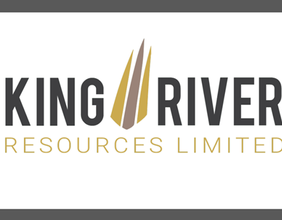Highlights
- The target leverage ratio is the desired proportion of debt to the total market value of a firm, set by management.
- Balancing debt and equity is crucial for optimizing the firm’s capital structure and minimizing the cost of capital.
- Achieving the target leverage ratio supports financial stability and strategic growth while managing risks.
The target leverage ratio is a key financial metric that reflects the desired balance of debt to total market value of a firm, as determined by its management. This ratio is a central component of a company’s capital structure strategy, guiding decisions on how much debt to use relative to equity. Striking the right balance between debt and equity is vital for minimizing the overall cost of capital and maximizing shareholder value.
What is the Target Leverage Ratio?
The target leverage ratio is defined as the proportion of a firm’s total market value represented by debt. It is expressed as:
Target Leverage Ratio=Market Value of DebtTotal Market Value of the Firm (Debt + Equity)\text{Target Leverage Ratio} = \frac{\text{Market Value of Debt}}{\text{Total Market Value of the Firm (Debt + Equity)}}Target Leverage Ratio=Total Market Value of the Firm (Debt + Equity)Market Value of Debt
This ratio is a financial benchmark that management aims to maintain over time, aligning with the company’s strategic goals, industry standards, and risk tolerance. By setting a target leverage ratio, firms can create a structured approach to capital allocation, financial planning, and risk management.
Importance of the Target Leverage Ratio
Setting a target leverage ratio offers several benefits to a firm:
- Optimized Capital Structure: The ratio helps firms determine the most efficient mix of debt and equity, balancing the cost of capital to enhance profitability.
- Financial Flexibility: A clear target leverage ratio provides guidance for capital raising decisions, enabling the firm to respond effectively to growth opportunities or financial challenges.
- Risk Management: By adhering to a target leverage ratio, companies can manage financial risk, avoiding excessive debt levels that might threaten their solvency.
Factors Influencing the Target Leverage Ratio
The optimal target leverage ratio is influenced by various internal and external factors:
- Industry Norms and Benchmarks: Different industries have distinct capital structure characteristics. For example, capital-intensive sectors like utilities and telecommunications often maintain higher leverage ratios, while technology firms may prefer lower leverage due to their volatile earnings.
- Company’s Risk Profile: Firms with stable and predictable cash flows can afford higher leverage since they have a greater capacity to service debt. Conversely, firms with more volatile earnings might opt for a lower target leverage ratio to mitigate financial risk.
- Tax Considerations: Interest payments on debt are tax-deductible, which can make debt financing attractive. Companies often set a higher target leverage ratio to take advantage of the tax shield provided by interest expenses.
- Market Conditions: Economic and financial market conditions play a crucial role. In low-interest environments, firms may increase their target leverage ratios to capitalize on cheaper borrowing costs. During economic uncertainty or rising interest rates, firms might lower their target leverage to reduce financial risk.
- Growth Opportunities: Companies with significant growth opportunities may prefer a lower leverage ratio to maintain financial flexibility for future investments. Conversely, mature firms with stable cash flows may set a higher target leverage ratio to enhance returns to shareholders.
Determining the Target Leverage Ratio
The process of determining the target leverage ratio involves strategic planning and financial analysis. Firms typically consider the following methods:
- Cost of Capital Analysis: Companies aim to minimize their weighted average cost of capital (WACC) by adjusting their leverage ratio. The optimal target leverage is reached when the marginal cost of debt equals the marginal cost of equity, minimizing the overall cost of capital.
- Comparative Industry Analysis: Firms often benchmark their leverage ratios against industry averages. This approach helps companies gauge where they stand relative to their peers and adjust their target ratios to remain competitive.
- Scenario Planning and Stress Testing: By analyzing various economic scenarios and conducting stress tests, firms can determine how different levels of leverage would impact their financial health and performance under adverse conditions.
- Historical Analysis: Reviewing historical leverage ratios and their impact on the firm’s financial performance provides valuable insights. Management may adjust the target leverage based on lessons learned from past financial decisions.
The Trade-Offs of Setting a Target Leverage Ratio
Maintaining a target leverage ratio involves balancing the benefits of debt with the associated risks:
- Benefits of Debt Financing: Debt can be a cheaper source of capital than equity due to tax advantages and lower required returns. It can also provide financial discipline, as firms are obligated to meet debt payments, which can encourage efficient use of resources.
- Risks of Excessive Leverage: High leverage increases the firm’s fixed obligations, making it more vulnerable during economic downturns or periods of declining revenue. Excessive debt can lead to financial distress, limit growth opportunities, and negatively impact credit ratings.
Adjusting the Target Leverage Ratio
Over time, firms may need to adjust their target leverage ratio in response to changing business environments and strategic priorities:
- Mergers and Acquisitions (M&A): During acquisitions, the acquiring firm’s leverage ratio often changes. Management may temporarily accept a higher leverage ratio to finance the purchase, with plans to reduce debt post-acquisition.
- Changes in Tax Policy: Shifts in tax regulations, such as changes to the deductibility of interest expenses, can influence the attractiveness of debt financing and lead firms to adjust their target ratios.
- Economic Downturns: During recessions or financial crises, firms may reduce their target leverage ratio to conserve cash, lower debt obligations, and strengthen their balance sheets.
- Equity Issuances: If a firm’s leverage ratio exceeds its target, it may issue new equity to rebalance its capital structure, even though this could dilute existing shareholders.
Real-World Examples of Target Leverage Ratio Strategies
- Apple Inc.: Historically, Apple maintained a low leverage ratio. However, in recent years, it increased its leverage through debt issuances to finance share buybacks and dividends, taking advantage of low interest rates while still maintaining financial stability.
- General Electric (GE): GE has periodically adjusted its target leverage ratio in response to changing market conditions and strategic shifts, particularly during its restructuring efforts to strengthen its balance sheet and improve financial health.
- Tesla Inc.: Tesla has maintained a lower target leverage ratio compared to traditional automakers, prioritizing financial flexibility to support its rapid expansion and investments in new technologies.
Conclusion
The target leverage ratio is a fundamental aspect of a firm’s capital structure strategy. By carefully managing the balance between debt and equity, companies can optimize their cost of capital, enhance financial flexibility, and support long-term growth. However, achieving and maintaining the optimal ratio requires ongoing assessment, strategic decision-making, and a deep understanding of market dynamics and internal financial conditions.
In essence, the target leverage ratio is not just a financial metric; it is a strategic tool that reflects a company’s approach to managing risk, capital allocation, and shareholder value. For businesses seeking to navigate the complexities of the financial landscape, a well-defined target leverage ratio is a key component of sound financial management and sustainable success.




_02_05_2025_05_53_40_418159.jpg)

